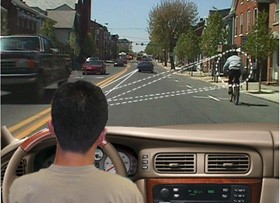

Given that 2/3rds of all the nerves that enter our brains are visual, it’s easy to see that the visual system plays a major role in attention and memory.
Most of our brain is dedicated to vision. Vision provides more information about our environment than all of our other senses combined. The mechanical movement of our eyes is under our voluntary control through the use of “striated muscles” – our voluntary muscular system. Like any voluntary muscular system, we can learn to use them better. The eyes are the front-most part of our brain, and we can learn to literally “direct our brain” to where we want to pay attention and ultimately remember what we see.
If one learns to improve visual attention, there is a much better chance of developing a memory for it!

Working Memory: Bringing into awareness previous memory, matching it with current input and considering future outcomes or actions. This is correlated with intelligence, and can be developed. Either sub-vocal rehearsal or visual imagery is employed here. Visual imagery is usually more effective and enduring, and is developed in Vision Therapy.
Declarative Memory: To be able to verbally share with others what you have experienced (episodic memory) or what you know about the world (semantic memory). Through the development of visual imagery in Vision Therapy, one can learn to do this more effectively, and transfer new information to long-term memory.
Implicit Memory: What is remembered based on experience with the regularities of the environment (procedural memory) and with the physical interaction with the environment (motor memory). This type of memory isn’t easily shared verbally, but much easier when exhibited by behavior.